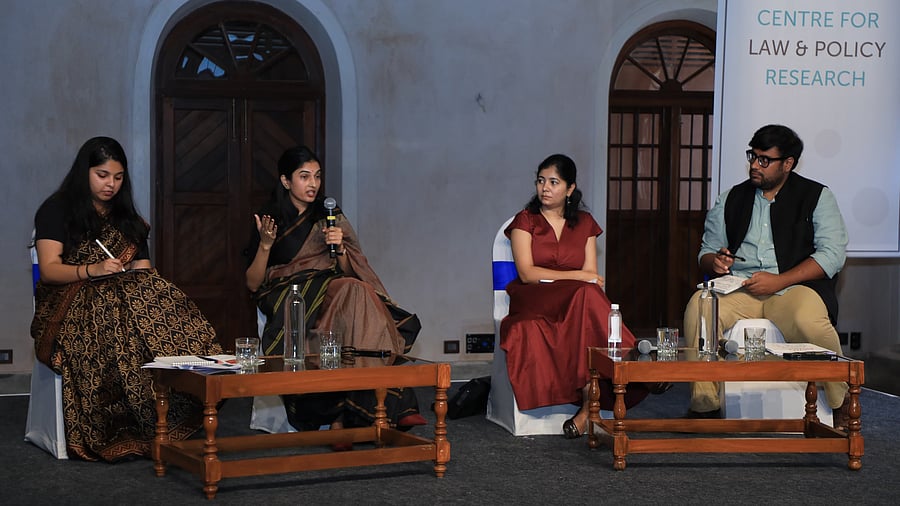
(L-R) Gauri Kashyap, Associate Editor of 'Supreme Court Observer' and facilitator of the panel discussion; legal journalists Jyoti Yadav and Apurva Vishwanath; and Vakasha Sachdev, Senior Manager, Government Affairs and Policy, at Logically.
Credit: CLPR
Bengaluru: The underrepresentation of women in the higher judiciary remains a major issue in India, where women constitute only 14.27% of high court judges and 6 per cent of Supreme Court judges, according to the Centre for Law and Policy Research (CLPR).
Among them, the number of women judges from marginalised backgrounds — such as dalits, adivasis, religious minorities, first-generation lawyers, and those from socio-economically disadvantaged backgrounds — is negligible.
The CLPR noted that systemic barriers, including opaque judicial appointment processes, gender bias and inadequate institutional support, continue to hinder women's access to leadership positions in the judiciary.
On Sunday, CLPR concluded a two-day consultation on gender inclusion in the judiciary, where lawyers, judges, researchers, and journalists examined and discussed systemic gender issues in the judicial system.
To address these concerns, CLPR conducted a national consultation titled 'Equal Justice: Ensuring Gender Inclusion in the Higher Judiciary'.
"Our vision extends beyond mere numerical parity to a fundamental shift in attitudes and perceptions, where gender parity is ingrained in the judiciary," CLPR stated.
In a panel discussion on the media's role in highlighting the gender gap in the judiciary, legal journalist Apurva Vishwanath stressed that the media must engage in a faithful retelling of what happens in the courts, rather than merely stating the facts of a case.
She recalled an instance in which judges joked about a rape and murder case in court while the victim’s parents were in attendance. She also emphasised that the media could play a crucial role in shedding light on the opaque judicial appointment process.
Legal journalist Jyoti Yadav highlighted the need for the media to go beyond headlines and explore deeper stories. "During the Atul Subhash suicide case, there were negative comments all over social media about women and their role in the judiciary. There is a need to change the narrative with positive reporting," she said.
She also shared an example from her own reporting on the lack of infrastructure for women in the judiciary in Hapur, a small town in Uttar Pradesh. The 13 women judges and 200 women lawyers in the area had access to only one functional toilet. However, after a report on the dire situation was published, the issue gained widespread attention.
